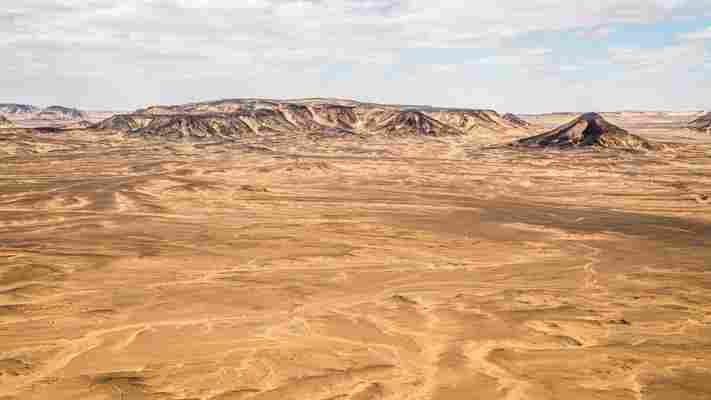
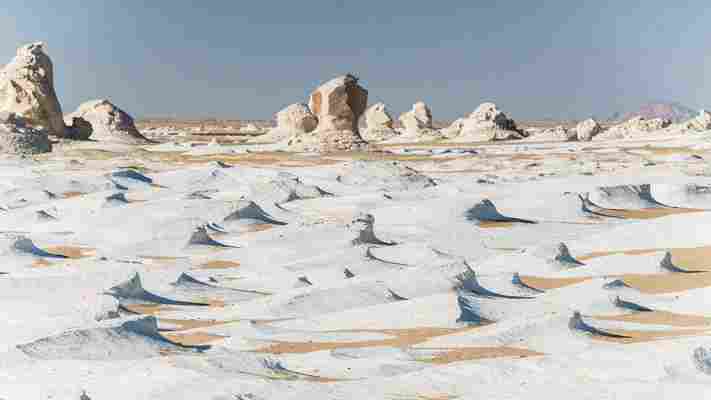
The Bahariya and Farafra depressions don’t even cover 1% of the Egyptian Sahara
Located in Egypt’s Western Desert, the Bahariya and Farafra depressions don’t even cover 1% of the Egyptian Sahara. Yet, they have some of the rarest landscapes and geological formations in the entire country.This is not the place where archaeologists come to find ancient tombs or hidden treasures; rather, this is a destination for dinosaurs fossils and remnants of other species that we have not seen for millions of years. (Credit: Juan Martinez)
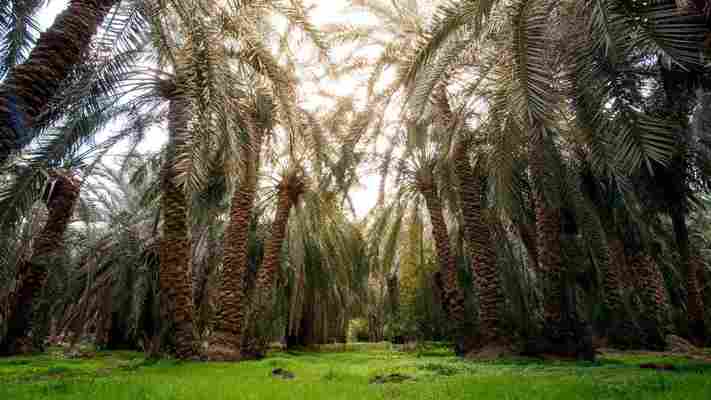
In the Bahariya depression, an oasis brings life to one of the harshest regions on Earth
In the heart of the Bahariya depression about 370km south-west of Cairo, an oasis brings life to one of the harshest regions on Earth. As with most oases in the Western Desert, Bahariya Oasis was formed after the depression reached the water table and natural springs emerged.Hot springs are one of the main attractions in this verdant area filled with palm trees and fresh fruits. The over 40°C sulphur-scented waters are perceived by many locals and visitors to hold healing properties, as well as offer a pleasurable way to end a long day. (Credit: Juan Martinez)
The Sahara's Black Desert, one of the strangest desertic landscapes in the world
Further south from Bahariya Oasis, I was surrounded by hundreds of black powder-covered hills. This is the Black Desert, one of the strangest desertic landscapes in the world.To get a better view, I climbed the “English Mountain”, the highest point in the Black Desert and a common spot to marvel at this alien world. Once at the top, my breath was taken away and my clothing was covered with black sandstone powder, a sign of volcanic activity that occurred during the Jurassic Period. (Credit: Juan Martinez)
Between Bahariya and Farafra, limestone boulders emerged from soil erosion years ago
The landscapes between the Bahariya and Farafra depressions change fast. About 30km further west, the volcanic hills of the Black Desert were no longer visible and a monochromatic flat land dominated the area. It felt for a moment that nature had stopped and life there was non-existent.Nevertheless, golden limestone boulders that emerged from soil erosion millions of years ago provide home to wild endangered species, such as white foxes, Egyptian gazelles and rams. (Credit: Juan Martinez)
In the Sahara, there are formations made of barite or calcite crystals
“We are going to see a mountain made out of crystals”, said my Bedouin driver, Islam, pointing to a small rocky hill next to the highway. From a distance there was nothing special about this formation – in fact, other outcrops looked more appealing to climb and explore. However, as we walked up the hill, the columnar-shaped stalagmites made of long, colourless crystals changed my opinion immediately.Although Islam suggested that the crystal formations are quartz, German geologist Norbert Brügge later told me that they are instead made of barite or calcite crystals. “While calcite crystals arise from solutions formed in sedimentary calcareous rocks under normal conditions, quartz arise out of tectonic disturbances from great depths,” he said. “Furthermore, based on the optics and hardness of these crystal structures, it is easy to conclude these are not quartz.” (Credit: Juan Martinez)
The White Desert in Egypt has mushroom-shaped formations made of white limestone
The White Desert, about 126km south-west of the Black Desert, is by far the Western Desert’s most unusual natural site. This vast area of mushroom-like shapes and sea waves made of white limestone are marvels of nature that astonish even the most experienced traveller.Following an ice age that occurred 30 million years ago, a tectonic uplift created these chalk-like outcrops, and countless sandstorms have continued to sculpt their shape ever since. (Credit: Juan Martinez)
Walking around the White Desert feels like visiting an art museum
Walking around the White Desert feels like visiting an art museum. Each of these natural structures are completely different, bizarre and inexplicable to a point that they each deserve their own inspection.The desert was recognised as a Natural Protectorate by the Egyptian government in 2002, and to keep the area as pristine as possible, human development in or near the desert has been banned. But while there are no tourism facilities in the area, people on some private tours can go and camp when they have a local Bedouin guide with them. (Credit: Juan Martinez)
Many consider the full moon the best time to see Egypt's White Desert
Many consider the full moon to be the best time to see the White Desert. During this time, the chalk-white rocks reflect the bright moonlight, bringing the limestone shapes to life. From one moment to another, and depending on the viewing angle and light, I found more than one familiar shape.I spotted a sphinx, camels and human faces, which only my imagination and the light of the moon were able to create. (Credit: Juan Martinez)
Camping in the White Desert is not a luxurious experience
My camping trip in the White Desert was not a luxurious experience. The Bedouin drivers simply parked my group’s two vehicles against the direction of the wind, threw some rugs on the cold sand and lit a fire to keep us warm through the night. There were no rain covers, stretch tents or man-made facilities to disrupt the isolated landscape.Although temperatures almost reached 0°C at night, our group kept warm by sleeping next to each other inside sleeping bags. Despite the discomfort, each time I opened my eyes I forgot the cold and was able to marvel at the millions of stars above me. (Credit: Juan Martinez)
Exploring Egypt's White Desert at night can be magical
Exploring the White Desert at night was magical. Some people from my group climbed smaller rocks to get a better view of the area, while others got lost in the sea of white stone.I simply sat on a rock, took my camera out and let the shutter capture the beauty of the night, as I wondered about one of the most bizarre landscapes that I’d seen in my life. (Credit: Juan Martinez)


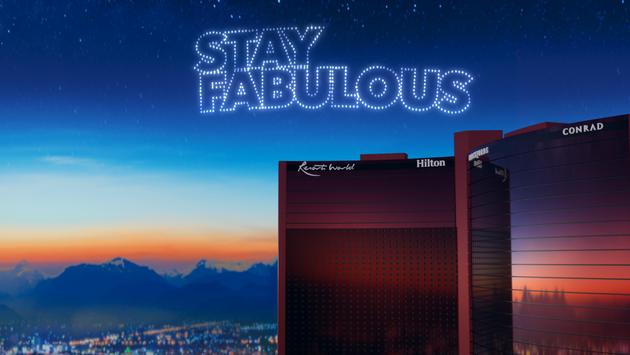

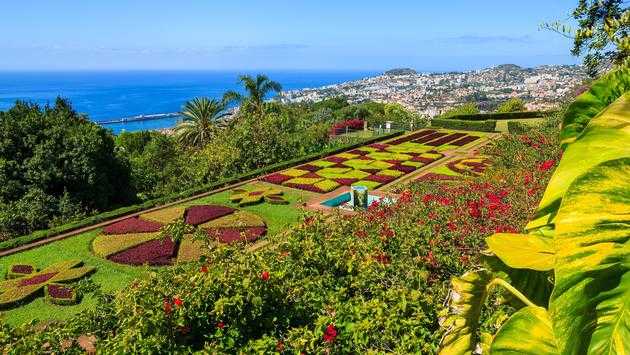

Leave a Comment